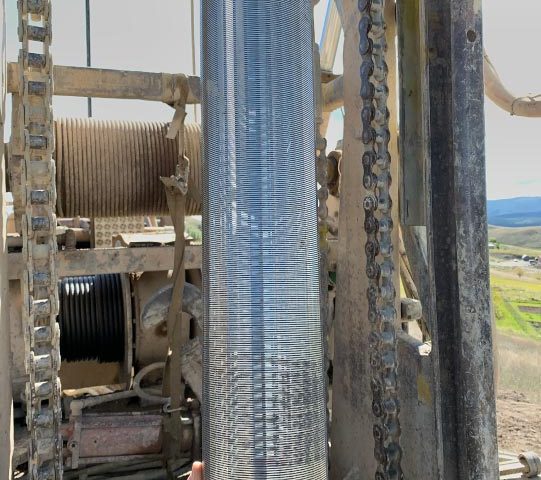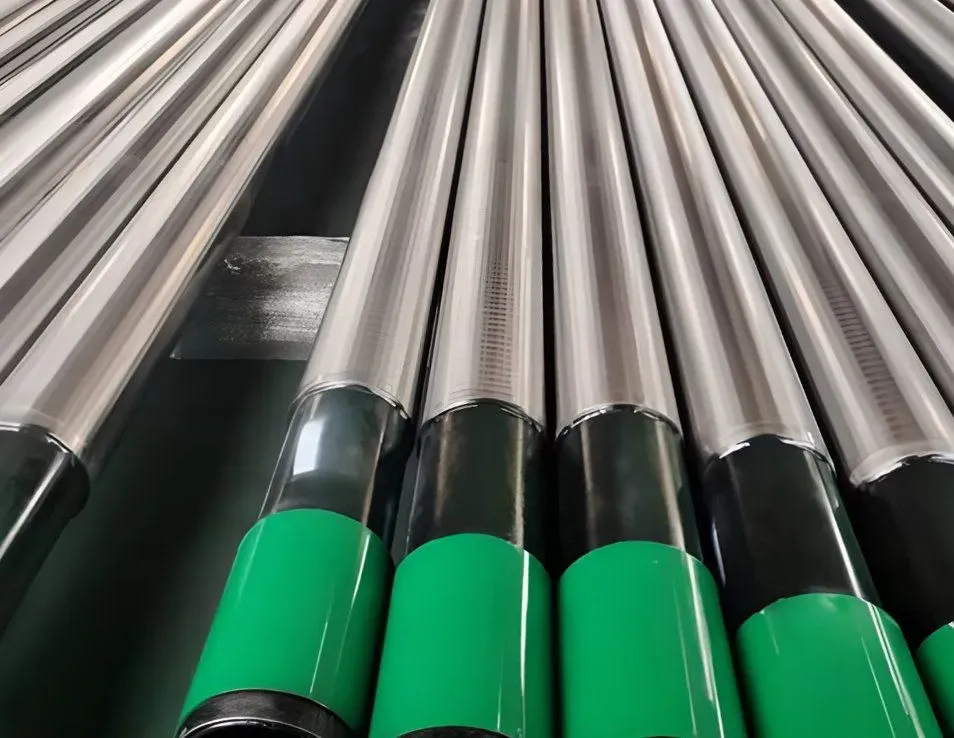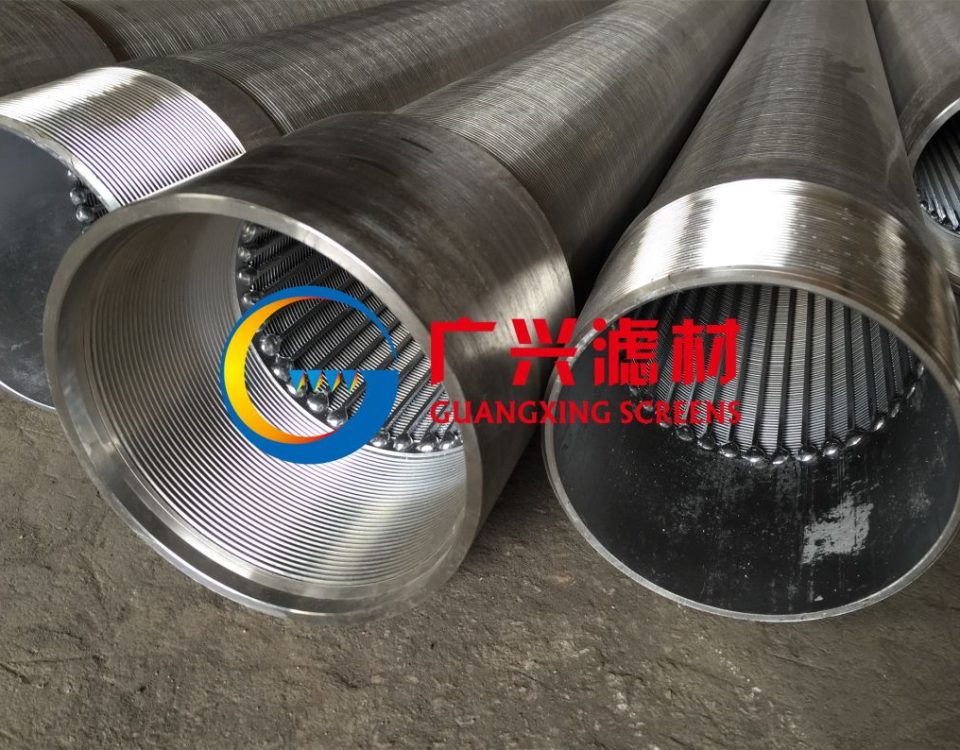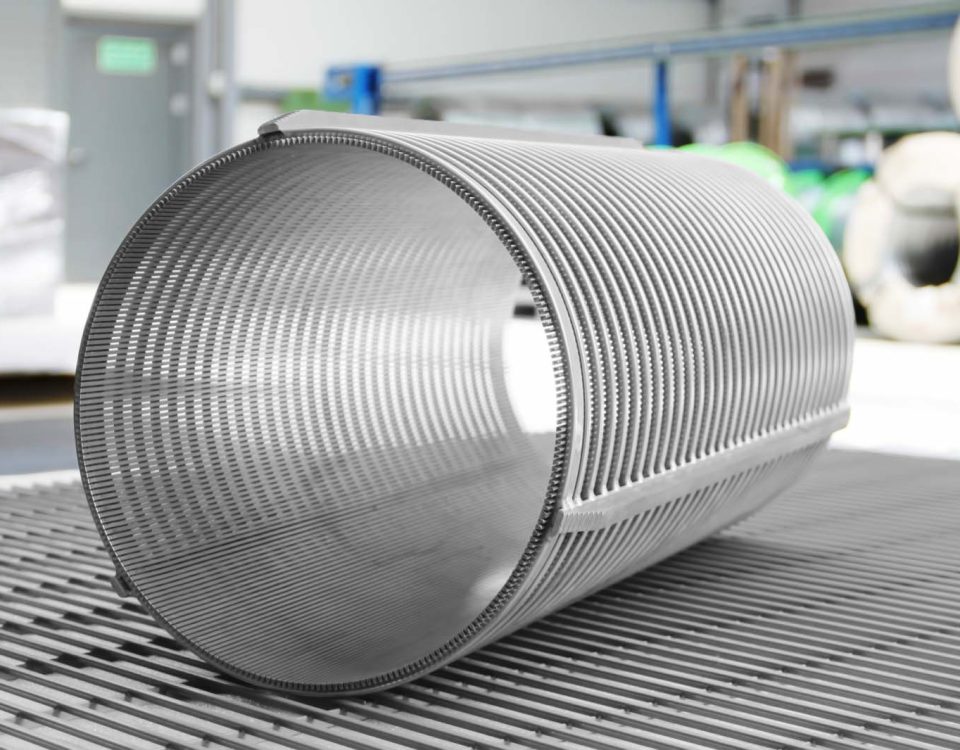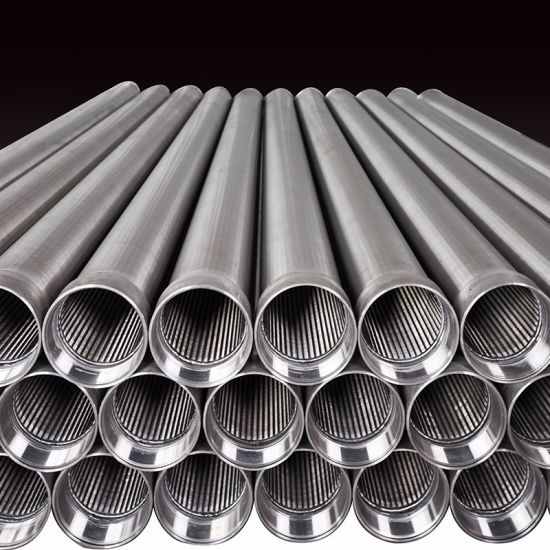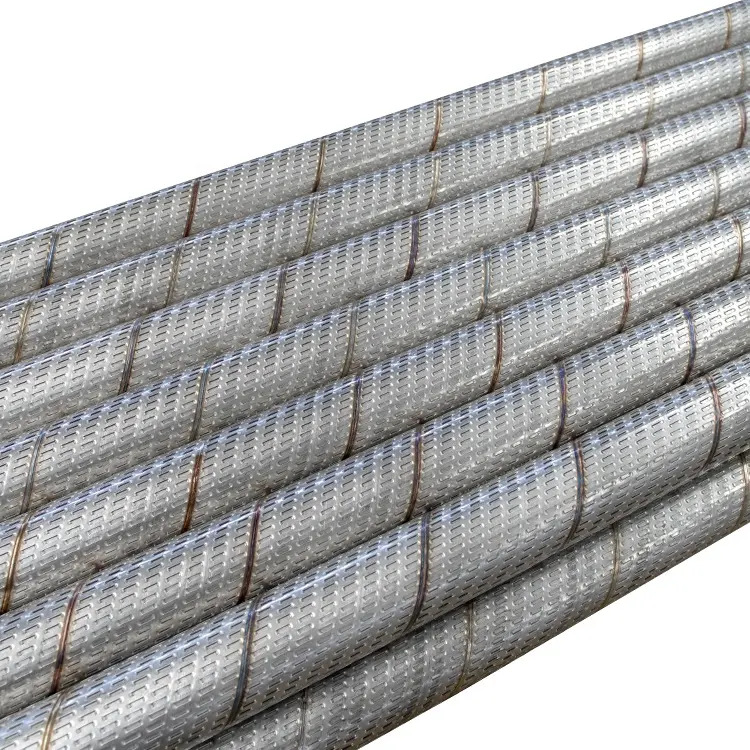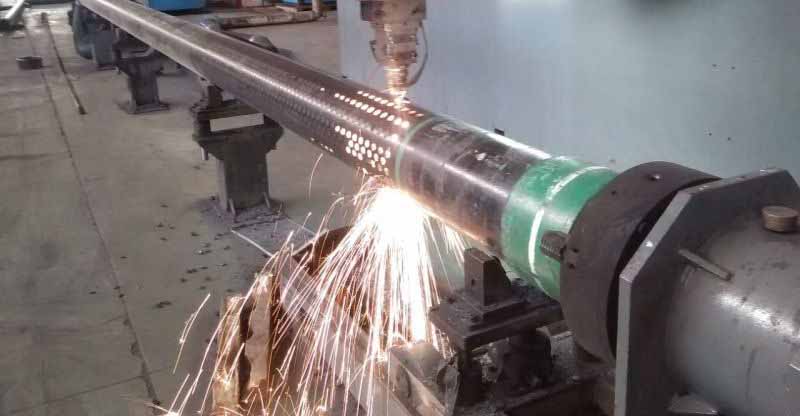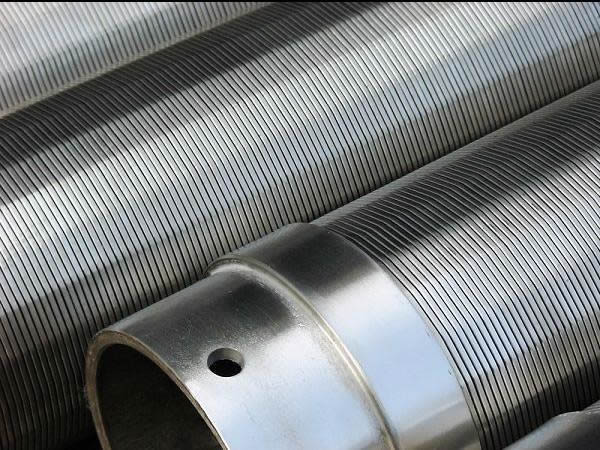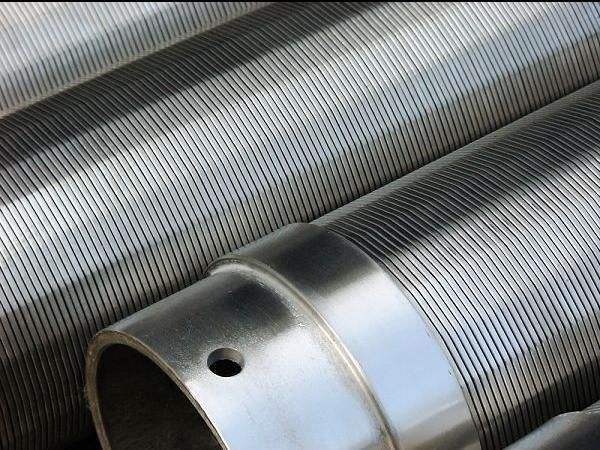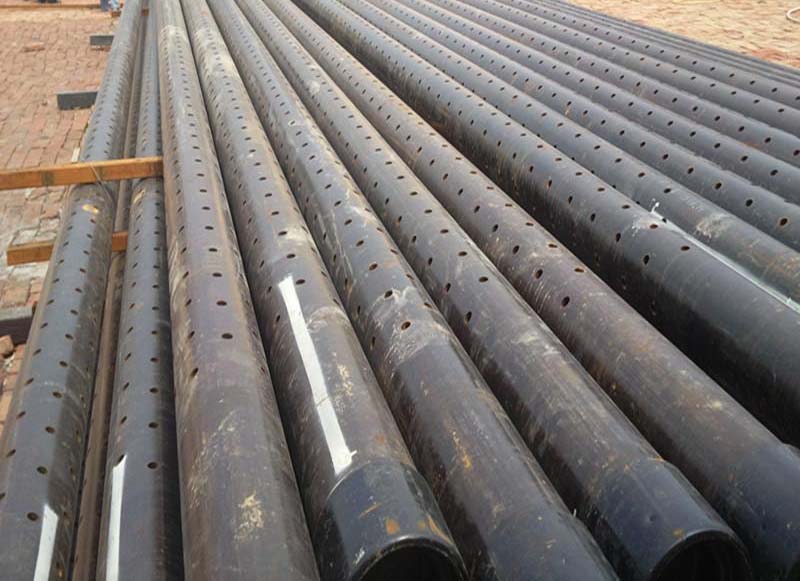stainless steel well screens and well casings Introduction
Stainless steel screens and casings play a
crucial role in various industries, such as water well drilling, dầu và khí đốt
extraction, and environmental monitoring. They are essential for filtering out
particles, Cát, and debris, ensuring the efficient operation of equipment and
the quality of the extracted resources. This comprehensive guide will provide an
in-depth understanding of how stainless steel screens and casings work, their
các ứng dụng, manufacturing processes, material selection, and maintenance.
Thép không gỉ: A versatile material
Stainless steel is a corrosion-resistant
alloy of iron, crom, Niken, and other elements. Its corrosion resistance, mechanical
sức mạnh, và low
maintenance requirements make it an ideal material for screens and casings
in challenging environments. Stainless steel is available in various grades,
each with different properties, making it suitable for specific applications.
Stainless steel grades
There are several stainless steel grades
used for screens and casings, bao gồm:
- 304/304L: General-purpose stainless
steel with good corrosion resistance and mechanical properties. - 316/316L: A more corrosion-resistant
cấp, suitable for applications in harsh environments or with aggressive
fluids.
Thép không gỉ kép: These grades have a dual-phase microstructure
of austenite and ferrite, offering higher strength and corrosion resistance
than conventional stainless steels.
Material selection depends on factors such
as the chemical composition of the fluid, nhiệt độ, áp lực , and required
sức mạnh.
The role of screens and casings in well
xây dựng
Screens and casings are essential
components in the construction of water wells, giếng dầu khí, và environmental
monitoring wells. Screens are typically installed in the production zone of
the well, allowing fluids to flow into the wellbore while filtering out sand and
other particles. Casings, on the other hand, are large-diameter pipes that are
inserted into the well to provide structural support and isolate different
geological formations.
Screens
Screens are installed in well completions
để:
- Filter out sand, silt, and other
particles - Protect the wellbore from collapse
- Minimize turbulence and lưu lượng
restrictions - Prevent damage to pumps and other
Trang thiết bị - Ensure the efficient production of
nước, dầu, or gas
There are various types of screens
available, such as wire-wrapped screens, pre-packed screens, and slotted liners.
The choice of screen depends on factors such as the size of the particles to be
filtered, the well’s production rate, and the formation’s characteristics.
Casings
Casings play a crucial role in well
construction by:
- Providing structural support for the
wellbore - Isolating different geological
formations to prevent cross-contamination - Protecting the well from external
contaminants and áp lực
changes - Facilitating the installation of
production equipment
Well casings can be made from various
nguyên vật liệu, including carbon steel, thép không gỉ, and plastic. Thép không gỉ
casings are preferred in corrosive environments or when the well is exposed to
aggressive fluids.
Manufacturing processes for stainless
steel screens and casings
The manufacturing process for stainless
steel screens and casings primarily involves cutting, forming, and welding
operations. Some common manufacturing processes include:
Wire-wrapped screens
Wire-wrapped screens are manufactured by
winding a continuous wire around a series of support
rods, forming a V-shaped slot. The wire is typically welded to the support
rods, creating a strong and rigid structure. The slot size can be easily
điều khiển bằng cách điều chỉnh khoảng cách dây và hình dạng.
Màn hình đóng gói sẵn
Màn hình đóng gói sẵn bao gồm một
màn hình quấn dây hoặc có rãnh được bao quanh bởi một lớp cát hoặc sỏi, được biết như
các lọc
đóng gói. Gói bộ lọc được giữ cố định bằng một tấm vải liệm bên ngoài, đó là
thường được làm bằng thép không gỉ đục lỗ. Màn hình đóng gói sẵn cung cấp được cải thiện Cát
điều khiển và giảm thời gian lắp đặt so với màn hình thông thường.
lót rãnh
Lót rãnh được thực hiện bằng cách cắt một
một loạt các khe vào một ống thép không gỉ. Kích thước khe và mẫu có thể được
tùy chỉnh để đáp ứng các yêu cầu dự án cụ thể. rãnh
lót rẻ hơn so với màn hình quấn dây nhưng cung cấp thấp hơn
hiệu quả lọc và có thể dễ bị tắc hơn.
vỏ giếng
Vỏ giếng thường được sản xuất
từ ống thép không gỉ liền mạch hoặc hàn. Các đường ống được cắt theo yêu cầu
length and threaded or coupled to create a continuous casing string. In some
cases, the casing may be coated with corrosion-resistant materials or fitted
with centralizers to improve its performance.
Installation and maintenance
Proper installation and maintenance of
stainless steel screens and casings are essential to ensure the efficient
operation of the well and minimize the risk of failure.
Cài đặt
During the installation process, it’s
crucial to:
- Select the appropriate screen and
casing materials based on the well’s conditions - Properly size and position the
screens to ensure efficient filtration and production - Install centralizers and other
accessories as needed to maintain the casing’s position and integrity - Ensure proper handling and storage of
the materials to prevent damage and corrosion
Bảo trì
Regular maintenance is essential to
prolong the life of stainless steel screens and casings. Maintenance activities
may include:
- Periodic inspectionsand monitoring to
identify signs of corrosion, damage, or wear - Cleaning and flushing the screens to
remove accumulated debris and prevent plugging - Monitoring well performance and
adjusting production rates to minimize sand production and prevent erosion - Implementing sự ăn mòn
control measures, such as cathodic protection or chemical treatments
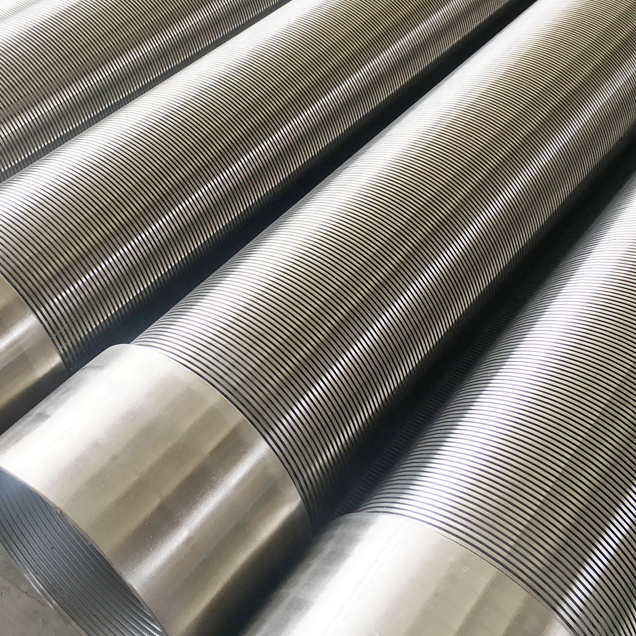
| BASE PIPE | SLIP ON SCREEN JACKET | |||||||||
| Trên danh nghĩa Đường kính |
Ống OD sống mm sống |
Trọng lượng lb/ft W. T[mm] |
kích thước lỗ Trong |
Holes per foot | Tổng Area of holes 2/ft |
Màn hình OD sống trong sống |
Open area of screen in2/ft KHE CẮM |
|||
| 0.008" | 0.012" | 0.015" | 0.020" | |||||||
| 2-3/8 | 60 | 4.6[4.83] | 3/8 | 96 | 10.60 | 2.86 | 12.68 | 17.96 | 21.56 | 26.95 |
| 2-7/8 | 73 | 6.4[5.51] | 3/8 | 108 | 11.93 | 3.38 | 14.99 | 21.23 | 25.48 | 31.85 |
| 3-1/2 | 88.9 | 9.2[6.45] | 1/2 | 108 | 21.21 | 4.06 | 18.00 | 25.50 | 30.61 | 38.26 |
| 4 | 101.6 | 9.5[5.74] | 1/2 | 120 | 23.56 | 4.55 | 20.18 | 28.58 | 34.30 | 42.88 |
| 4-1/2 | 114.3 | 11.6[6.35] | 1/2 | 144 | 28.27 | 5.08 | 15.63 | 22.53 | 27.35 | 34.82 |
| 5 | 127 | 13[6.43] | 1/2 | 156 | 30.63 | 5.62 | 17.29 | 24.92 | 30.26 | 38.52 |
| 5-1/2 | 139.7 | 15.5[6.99] | 1/2 | 168 | 32.99 | 6.08 | 18.71 | 26.96 | 32.74 | 41.67 |
| 6-5/8 | 168.3 | 24[8.94] | 1/2 | 180 | 35.34 | 7.12 | 21.91 | 31.57 | 38.34 | 48.80 |
| 7 | 177.8 | 23[8.05] | 5/8 | 136 | 42.16 | 7.58 | 23.32 | 33.61 | 40.82 | 51.95 |
| 7-5/8 | 194 | 26.4[8.33] | 5/8 | 148 | 45.88 | 8.20 | 25.23 | 36.36 | 44.16 | 56.20 |
| 8-5/8 | 219 | 32[8.94] | 5/8 | 168 | 51.08 | 9.24 | 28.43 | 40.98 | 49.76 | 63.33 |
| 9-5/8 | 244.5 | 36[8.94] | 5/8 | 188 | 58.28 | 10.18 | 31.32 | 45.15 | 54.82 | 69.77 |
| 10-3/4 | 273 | 45.5[10.16] | 5/8 | 209 | 64.79 | 11.36 | 34.95 | 50.38 | 61.18 | 77.86 |
| 13-3/8 | 339.7 | 54.5[9.65] | 5/8 | 260 | 80.60 | 14.04 | 37.80 | 54.93 | 66.87 | 85.17 |
Applications of stainless steel screens
and casings
Stainless steel screens and casings are
used in various industries, some of which include:
Khoan giếng nước
In water well drilling, thép không gỉ
screens and casings are used to filter out sand and silt, ensuring clean and
safe drinking water. Họ cũng cung cấp hỗ trợ cấu trúc cho giếng,
ngăn ngừa sụp đổ và ô nhiễm.
Khai thác dầu khí
Trong ngành dầu khí, không gỉ
màn hình và vỏ thép rất quan trọng để sản xuất và bảo trì hiệu quả
tính toàn vẹn tốt. Chúng được sử dụng để lọc cát và các hạt khác có thể
làm hỏng giếng, cũng như cô lập các thành tạo địa chất khác nhau để
ngăn ngừa lây nhiễm chéo.
Kiểm soát môi trường
Stainless steel screens and casings are
cũng được sử dụng trong các giếng quan trắc môi trường để thu thập các mẫu nước ngầm hoặc
khí đất. Khả năng chống ăn mòn và thấp BẢO TRÌ
yêu cầu bằng thép không gỉ làm cho nó trở thành một vật liệu lý tưởng cho những
các ứng dụng, nơi hiệu suất dài hạn là rất quan trọng.
Năng lượng địa nhiệt
Trong địa nhiệt
sản xuất năng lượng, màn hình và vỏ thép không gỉ được sử dụng để chịu được
nhiệt độ cao và chất lỏng ăn mòn. Họ đảm bảo khai thác nhiệt hiệu quả
và ngăn ngừa thiệt hại cho giếng và thiết bị.
Ưu điểm của màn hình thép không gỉ và
vỏ
Một số lợi ích khi sử dụng inox
màn hình và vỏ trong xây dựng tốt bao gồm:
- Chống ăn mòn: không gỉ
đặc tính chống ăn mòn của thép làm cho nó phù hợp để sử dụng trong
môi trường đầy thách thức, chẳng hạn như nhiệt độ cao, aggressive fluids, hay
đất ăn mòn. - Độ bền cơ học: Thép không gỉ
cung cấp độ bền cơ học cao, cải thiện tính toàn vẹn cấu trúc của giếng
và chống lại ngoại lực. - Bảo trì thấp: sự ăn mòn
sức đề kháng và độ bền của thép không gỉ giảm bảo trì
yêu cầu, dẫn đến chi phí dài hạn thấp hơn. - tùy chỉnh: Thép không gỉ
màn hình và vỏ bọc có thể được sản xuất ở các loại khác nhau, kích thước, và
cấu hình, cho phép tùy biến để
đáp ứng các yêu cầu cụ thể của dự án.
Phần kết luận
Stainless steel screens and casings play a
vai trò quan trọng trong việc đảm bảo hoạt động hiệu quả và tuổi thọ của giếng trong các
các ngành nghề. Khả năng chống ăn mòn của chúng, độ bền cơ học, và bảo trì thấp
yêu cầu làm cho chúng trở thành một lý tưởng vật chất
sự lựa chọn cho môi trường đầy thách thức. Bằng cách hiểu làm thế nào thép không gỉ
màn hình và vỏ làm việc, các quá trình sản xuất liên quan, và của họ
các ứng dụng, có thể đưa ra quyết định sáng suốt về cách phù hợp nhất
vật liệu và thiết kế cho các dự án xây dựng giếng cụ thể. Thích hợp
thực hành cài đặt và bảo trì sẽ tiếp tục đảm bảo tốt nhất có thể
hiệu suất và tuổi thọ của các thành phần giếng thiết yếu này.

